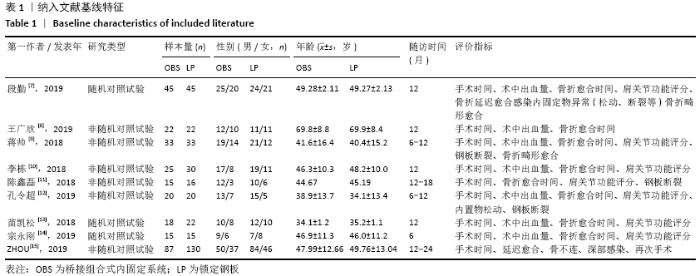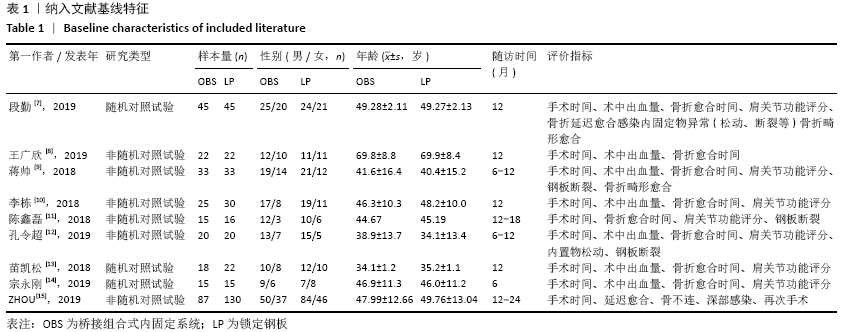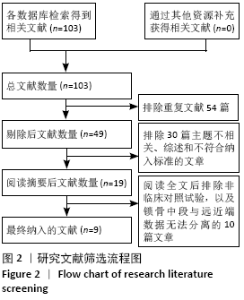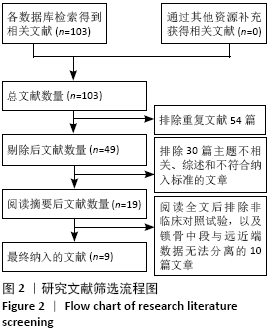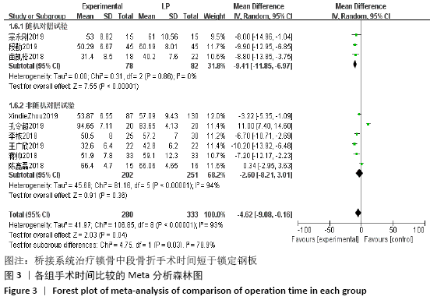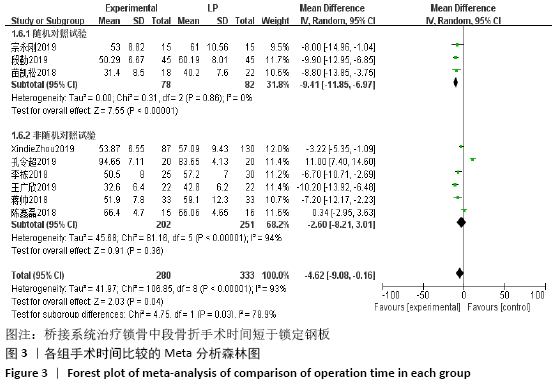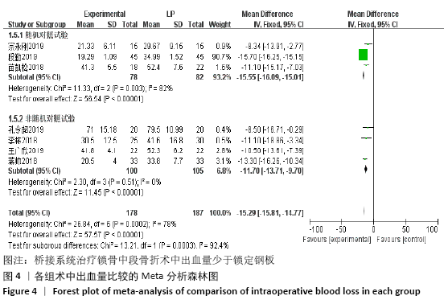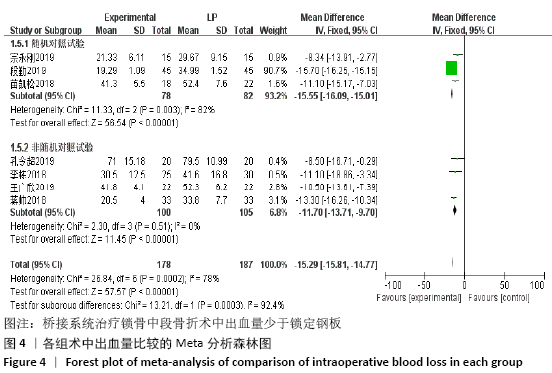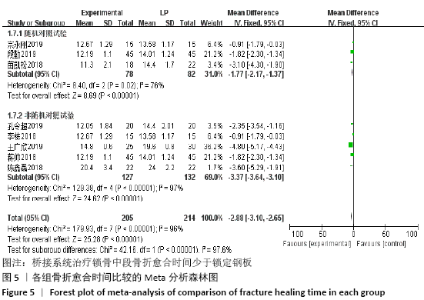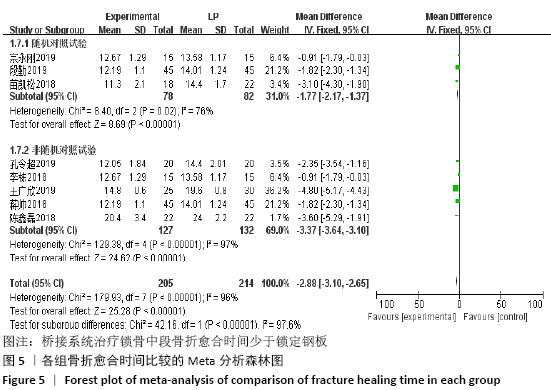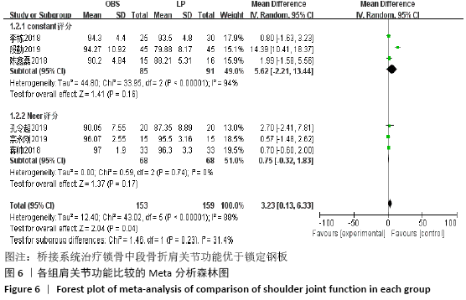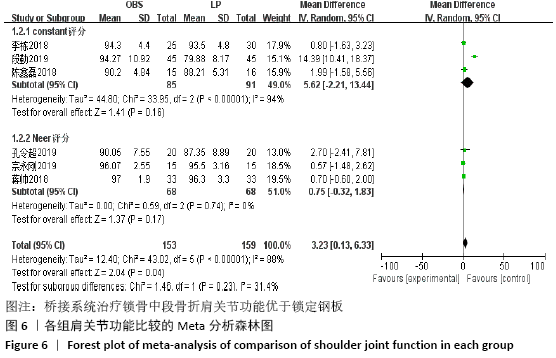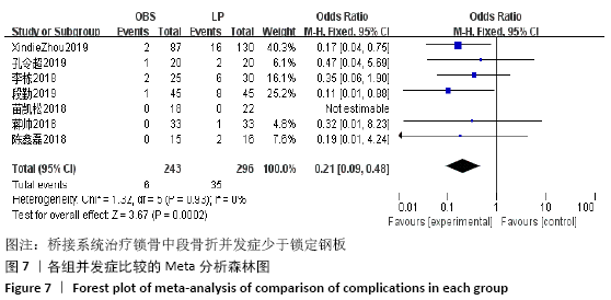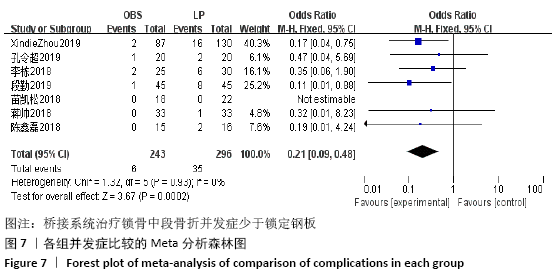[1] 唐佩福.锁骨骨折治疗方法的选择与思考[J].中国骨伤,2015,28(2):97-100.
[2] ROCKWOOD CA, GREEN DP, BUCHOLZ RW. Rockwood and Green’s fractures in adults. 6th Edition. Philadelphia: Lippincott Williams Wilkins, USA. 2006.
[3] 李恩琪,袁天祥,马宝通.锁骨骨折手术治疗与并发症控制研究进展[J].中国矫形外科杂志,2013,21(20):1350-1352.
[4] 牛锋,马勇,田涛.桥接系统治疗成人锁骨中段骨折[J].中国骨伤,2019,32(1): 38-42.
[5] 曾宪涛,庄丽萍,杨宗国.Meta分析系列之七:非随机实验性研究、诊断性试验及动物实验的质量评价工具[J].中国循证心血管医学杂志,2012,4(6):496-499.
[6] 马捷,刘莹,钟来平.Jadad量表与Cochrane偏倚风险评估工具在随机对照试验质量评价中的应用与比较[J].中国口腔颌面外科杂志,2012,10(5):417-422.
[7] 段勤.桥接组合式内固定系统、锁定加压钢板对锁骨中段骨折的治疗价值比较分析[J].中外医学研究,2019,17(12): 136-137.
[8] 王广欣,肖万军,王臣.桥接组合式内固定系统对老年锁骨中段移位骨折愈合和肩关节功能的影响[J].海南医学院学报, 2019,25(18):1396-1400.
[9] 蒋帅,顾卫东,王忍.桥接组合式内固定系统和锁定钢板治疗锁骨骨折的效果比较[J].江苏大学学报(医学版),2018, 28(3):264-266, 270.
[10] 李栋,卢小兵,周维波.桥接组合式内固定系统与锁定钢板治疗锁骨中段骨折的疗效比较[J].实用临床医药杂志,2018, 22(19):50-52,56.
[11] 陈鑫磊,许超,谢兵.桥接组合式内固定系统与锁定加压钢板治疗锁骨中段骨折的对比分析[J].创伤外科杂志,2018, 20(9):679-682.
[12] 孔令超,何高,李业奎.桥接组合式内固定系统治疗Edinburgh ⅡB型锁骨骨折的疗效[J].临床骨科杂志,2019,22(4): 458-461.
[13] 苗凯松,陈伟.桥接组合式内固定系统治疗成年锁骨中段骨折的疗效分析[J].中国微创外科杂志,2018,18(7):628-631.
[14] 宗永刚. 桥接组合式内固定系统治疗锁骨中段骨折的临床疗效观察[D].扬州:扬州大学,2019.
[15] ZHOU X, LI J, YANG H, et al. Comparison of 2 different fixation implants for operative treatment of mid-shaft clavicle fractures: a retrospective study. Med Sci Monit. 2019; 25:9728-9736.
[16] SLIM K, NINI E, FORESTIER D, et al. Methodological index for non-randomized studies (minors): development and validation of a new instrument. ANZ J Surg. 2003;73(9):712-716.
[17] 王满宜.锁骨骨折的治疗现状[J].中国骨伤,2008,21(7):487-489.
[18] 赵烽,熊鹰,张仲子.桥接组合式内固定治疗股骨骨折的效果及生物力学特征[J].中国组织工程研究,2014,18(13): 2127-2132.
[19] 刘其兴,李绍波,赵剑波.桥接组合式内固定系统治疗锁骨中段骨折[J].创伤外科杂志,2018,20(12):900-902.
[20] 姜世涛,王忍,顾卫东.桥接单棒系统内固定治疗锁骨中段骨折的疗效分析[J].中国骨与关节损伤杂志,2017,322(9): 971-997.
[21] 顾志华,孟和.骨折治疗的生物力学研究—弹性固定准则[J].河北省科学院学报,1989(2):19-23.
[22] 毕大卫,费骏,王志彬.尚天裕学术思想的形成与中国CO学派的确立[J].中国骨伤,1999,12(2):6-8.
[23] KONG L, ZHANG Y, SHEN Y. Operative versus nonoperative treatment for displaced midshaft clavicular fractures: a meta-analysis of randomized clinical trials. Arch Orthop Trauma Surg. 2014;134(11): 1493-1500.
[24] 谭远超,闫虎,周纪平.骨折愈合内固定技术的回归与分析[J].中国矫形外科杂志,2010,18(22):1934-1936.
[25] 苏佳灿,张春才,许硕贵,等.记忆生物力学作用下骨折愈合过程血管形成的特点[J].中国临床康复,2002,6(4):528-529.
[26] 熊鹰,李群辉,柳百炼.桥接组合式内固定系统与锁定接骨板钉系统在股骨骨折应用中的有限元分析[J].中国组织工程研究,2012,16(30):5516-5519.
[27] XU L, PENG XH, PAVUR R, et al. Quality management theory development via meta-analysis. Int J Prod Econ. 2020. Doi.org/10.1016/j.ijpe.2020.107759. |
